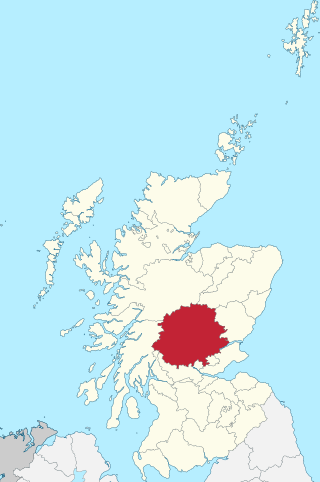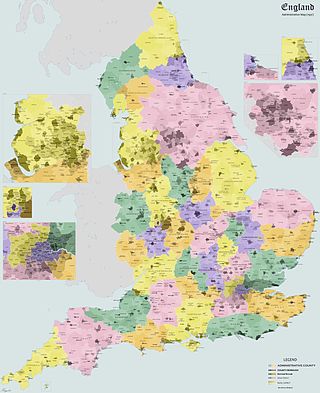Related Research Articles

Perthshire, officially the County of Perth, is a historic county and registration county in central Scotland. Geographically it extends from Strathmore in the east, to the Pass of Drumochter in the north, Rannoch Moor and Ben Lui in the west, and Aberfoyle in the south; it borders the counties of Inverness-shire and Aberdeenshire to the north, Angus to the east, Fife, Kinross-shire, Clackmannanshire, Stirlingshire and Dunbartonshire to the south and Argyllshire to the west. It was a local government county from 1890 to 1930.


A royal burgh was a type of Scottish burgh which had been founded by, or subsequently granted, a royal charter. Although abolished by law in 1975, the term is still used by many former royal burghs.

A burgh is an autonomous municipal corporation in Scotland and Northern England, usually a city, town, or toun in Scots. This type of administrative division existed from the 12th century, when King David I created the first royal burghs. Burgh status was broadly analogous to borough status, found in the rest of the United Kingdom. Following local government reorganisation in 1975, the title of "royal burgh" remains in use in many towns, but now has little more than ceremonial value.

Stirlingshire or the County of Stirling is a historic county and registration county of Scotland. Its county town is Stirling.


The hereditary peers form part of the peerage in the United Kingdom. As of August 2023, there are 805 hereditary peers: 30 dukes, 34 marquesses, 189 earls, 110 viscounts, and 442 barons.

Municipal boroughs were a type of local government district which existed in England and Wales between 1835 and 1974, in Northern Ireland from 1840 to 1973 and in the Republic of Ireland from 1840 to 2002. Broadly similar structures existed in Scotland from 1833 to 1975 with the reform of royal burghs and creation of police burghs.

A burgh of barony was a type of Scottish town (burgh).
A police burgh was a Scottish burgh which had adopted a "police system" for governing the town. They existed from 1833 to 1975.
A burgh of regality is a type of Scottish town.

The History of local government in Scotland is a complex tale of largely ancient and long established Scottish political units being replaced after the mid 20th century by a frequently changing series of different local government arrangements.
Local government areas covering the whole of Scotland were first defined by the Local Government (Scotland) Act 1889. As currently defined, they are a result, for the most part, of the Local Government etc (Scotland) Act 1994.
A regality was a territorial jurisdiction in old Scots law which might be created by the King or Queen only, by granting lands to a subject in liberam regalitatem, and the tract of land over which such a right extended.
The Convention of Royal Burghs, more fully termed the Convention of the Royal Burghs of Scotland, was a representative assembly which protected the privileges and pursued the interests of Scotland’s principal trading towns, the royal burghs, from the middle of the 16th century to the second half of the 20th century. It evolved as a forum in which burgh delegates, termed "commissioners", could "consult together and take common action in matters concerning their common welfare" before and during the sittings of parliament. An exclusively merchant body, it was essentially a parliament which "declared the law of the burghs" just as the Scottish Parliament "declared the law of the land". The Convention expanded over time by admitting lesser burghs to its membership; and by the 16th century had grown in influence to the extent that "it was listened to rather than directed by the government". Though still known as the "convention of royal burghs", it referred to itself from the late 17th century onwards as simply the "convention of burghs", as by then membership was no longer restricted exclusively to royal burghs and commissioners from all types of burgh were represented in parliament.
Montgomerieston, sometimes known as Montgomeryston or Ayr Fort, was a small burgh of regality and barony of only 16 acres or 6.5 hectares located within the walls of the old Ayr Citadel, also known as Cromwell's Fort or Oliver's Fort, situated in the town of Ayr, South Ayrshire, Scotland. Montgomerieston was named for the Montgomerie family, Earls of Eglinton.

The information about Scotland's domestic and foreign trade during the Middle Ages is limited. In the early Middle Ages the rise of Christianity meant that wine and precious metals were imported for use in religious rites. Imported goods found in archaeological sites of the period include ceramics and glass, while many sites indicate iron and precious metal working. The slave trade was also important and in the Irish Sea it may have been stimulated by the arrival of the Vikings from the late eighth century.